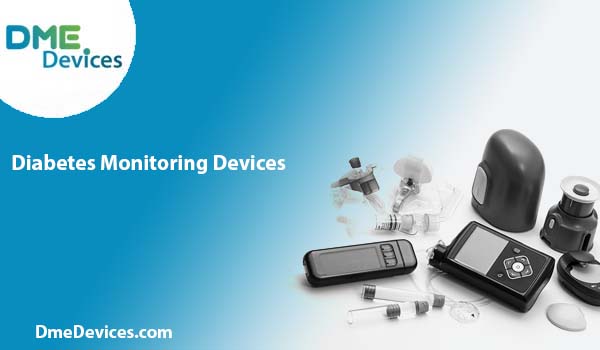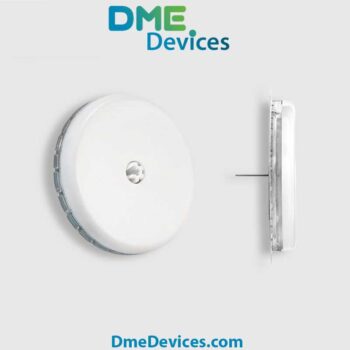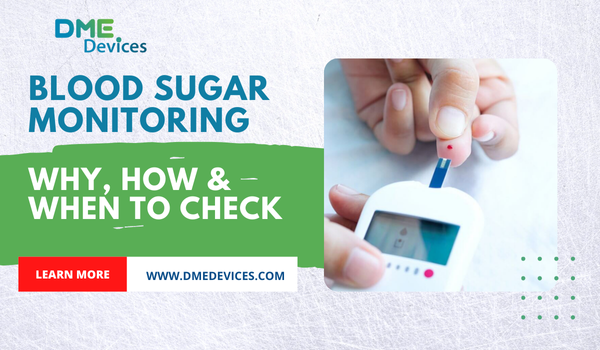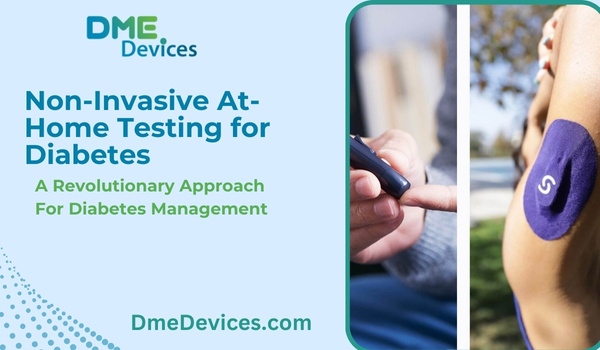Introduction
Diabetes is a chronic condition that requires constant vigilance and proactive management to maintain optimal health and prevent complications. In this journey, diabetes monitoring devices have emerged as invaluable tools, empowering individuals to take an active role in understanding their body’s responses and making informed decisions about their care. These devices not only provide real-time data but also offer insights into patterns and trends, enabling a personalized approach to diabetes management.
The Importance of Monitoring: A Cornerstone of Diabetes Care
Monitoring blood glucose levels is a cornerstone of effective diabetes management. By keeping track of their glucose levels, individuals can gain a better understanding of how various factors, such as food choices, physical activity, stress, and medication, affect their bodies. This knowledge is crucial for making necessary adjustments to their lifestyle, diet, or treatment plans, ultimately optimizing glycemic control and reducing the risk of complications associated with diabetes.
According to the American Diabetes Association (ADA), regular monitoring of blood glucose levels plays a vital role in achieving and maintaining target glycemic ranges, which can significantly reduce the risk of long-term complications, such as cardiovascular disease, kidney disease, nerve damage, and vision problems.
Types of Diabetes Monitoring Devices
Blood Glucose Meters: Portable and Convenient
Blood glucose meters have been a mainstay in diabetes management for decades. These handheld devices require a small drop of blood, typically obtained through a fingerstick, to measure the glucose concentration in the blood. Modern meters are designed with user-friendliness in mind, offering features such as large, easy-to-read displays, built-in memory for data storage, and connectivity options for seamless integration with mobile applications or cloud-based platforms.
One popular blood glucose meter is the FreeStyle Lite is a compact and user-friendly blood glucose meter designed for convenient and discreet everyday testing. With a backlit screen and a test strip port light, it allows for easy use in any lighting condition. Results are delivered in seconds, and the meter is compatible with FreeStyle Lite test strips that require only a small blood sample. Its Auto-Assist 2.0 software simplifies data management, enabling users to generate reports that help track trends in diabetes management. Overall, the FreeStyle Lite offers a portable solution for effective blood glucose monitoring.
According to a study published in the Journal of Diabetes Science and Technology, the use of blood glucose meters has been associated with improved glycemic control, increased self-management behaviors, and better adherence to treatment plans among individuals with diabetes.
Continuous Glucose Monitoring Systems (CGMs): Real-Time Insights
Continuous Glucose Monitoring Systems (CGMs) have revolutionized diabetes management by providing real-time, continuous monitoring of blood glucose levels. These advanced devices consist of a small sensor inserted under the skin, typically on the abdomen or arm, which measures interstitial fluid glucose levels every few minutes. CGMs transmit the data wirelessly to a receiver or compatible smart device, allowing individuals to monitor their glucose levels around the clock and detect trends and patterns more effectively.
The FreeStyle Libre 3 is a popular CGM device that offers real-time glucose monitoring, customizable alerts, and seamless data sharing with healthcare providers. It features a small, lightweight sensor that can be worn for up to 14 days, providing continuous glucose data without the need for fingersticks.
Another leading CGM system is the Dexcom G7, which is expected to be released soon. This highly anticipated device promises even better accuracy, longer sensor wear time, and improved connectivity features, further enhancing the user experience and streamlining diabetes management.
According to a study published in the Diabetes Technology & Therapeutics journal, the use of CGMs has been associated with improved glycemic control, reduced time spent in hypoglycemia (low blood sugar), and increased treatment satisfaction among individuals with type 1 and type 2 diabetes.
Insulin Pumps: Precise and Personalized Insulin Delivery
Insulin pumps are advanced devices designed to deliver precise doses of insulin to individuals with diabetes, particularly those with type 1 diabetes or advanced type 2 diabetes requiring insulin therapy. These small, wearable devices are programmed to mimic the body’s natural insulin delivery patterns, providing a continuous basal rate of insulin and allowing for additional bolus doses around mealtimes or to correct high blood glucose levels.
Many modern insulin pumps integrate with CGM systems, creating a closed-loop system that automatically adjusts insulin delivery based on real-time glucose readings. This technology, known as an artificial pancreas or hybrid closed-loop system, has been shown to significantly improve glycemic control and reduce the burden of diabetes management, according to a study published in the New England Journal of Medicine.
The Benefits of Diabetes Monitoring Devices
The use of diabetes monitoring devices offers numerous benefits, empowering individuals to take control of their condition and achieve better health outcomes. These benefits include:
- Enhanced glycemic control and reduced risk of complications: By providing real-time data and insights into glucose patterns, monitoring devices enable individuals to make informed decisions about their treatment plans, leading to improved glycemic control and a reduced risk of long-term complications associated with diabetes.
- Improved quality of life and independence: With the ability to monitor glucose levels discreetly and conveniently, individuals with diabetes can enjoy greater flexibility and independence in their daily lives, reducing the burden and stress associated with managing their condition.
- Real-time data and trend analysis for better decision-making: Monitoring devices offer access to comprehensive data and trend analysis, allowing individuals and their healthcare providers to identify patterns, assess the effectiveness of treatment plans, and make adjustments as needed.
- Increased convenience and reduced pain associated with frequent fingersticks: CGMs and insulin pumps can significantly reduce the need for frequent fingersticks, providing a more convenient and less painful monitoring experience.
- Integration with mobile apps and cloud platforms: Many modern monitoring devices can seamlessly integrate with mobile applications and cloud-based platforms, enabling data sharing, remote monitoring, and improved communication between individuals and their healthcare providers.
As technology continues to advance, diabetes monitoring devices are becoming increasingly sophisticated, user-friendly, and integrated into comprehensive diabetes management solutions. By embracing these tools, individuals with diabetes can take an active role in their care, achieve better glycemic control, and ultimately improve their overall health and well-being.
Choosing the Right Diabetes Monitoring Device
With the wide range of diabetes monitoring devices available, it is crucial to work closely with healthcare providers to determine the most appropriate option based on individual needs, preferences, and lifestyle factors. Factors to consider include:
- Type of diabetes: The type of diabetes (type 1 or type 2) and the treatment plan (insulin therapy, oral medications, or lifestyle modifications) can influence the choice of monitoring device.
- Lifestyle and activities: Individuals with an active lifestyle or who participate in sports may benefit from devices that are discreet, waterproof, and offer continuous monitoring capabilities.
- Comfort and ease of use: Devices should be user-friendly, minimally invasive, and comfortable to wear, ensuring optimal adherence and consistent use.
- Data management and connectivity: Individuals may prefer devices that integrate with mobile applications or cloud-based platforms for convenient data tracking, sharing, and analysis.
- Insurance coverage and costs: It is important to consider insurance coverage and out-of-pocket costs associated with the acquisition and maintenance of diabetes monitoring devices.
By carefully evaluating these factors, individuals can work with their healthcare providers to find the most suitable diabetes monitoring device that aligns with their needs, preferences, and overall diabetes management goals.
Embracing Technology for Better Diabetes Management
Diabetes monitoring devices have undoubtedly transformed the way individuals with diabetes manage their condition. By providing real-time data, insights, and personalized treatment options, these devices empower individuals to take an active role in their care and achieve better glycemic control.
Furthermore, the integration of monitoring devices with digital health solutions, such as mobile applications and cloud-based platforms, opens up new possibilities for remote monitoring, data-driven decision-making, and improved communication between individuals and their healthcare providers.
As technology continues to evolve, we can expect even more innovative solutions that further enhance diabetes management, promoting better health outcomes and quality of life for individuals living with this chronic condition.
Whether it’s the convenience of blood glucose meters like the FreeStyle Libre Lite, the real-time insights of CGMs like theFreeStyle Libre 3 or the upcoming Dexcom G7, or the precise insulin delivery ofinsulin pumps, embracing diabetes monitoring devices is a crucial step toward taking control of one’s health and navigating the journey of diabetes with confidence and empowerment.













Write a comment
Your email address will not be published. All fields are required